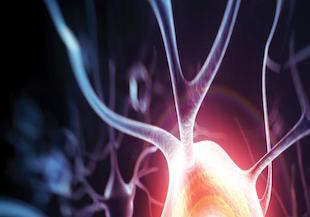2 min read

By: MD Biosciences on Jun 7, 2011 10:58:00 AM

Toll-like receptors (TLRs) are a family of 13 pattern recognition receptors expressed by leukocytes that are responsible for identifying foreign toxins and microbes and initiating inflammation as a part of the innate immune response. TLR4 is expressed on macrophages, microglia and Schwann cells.
TLR4 is thought to be activated by necrotic cells, injured axons, and extracellular matrix components. Elimination or modification of TLR4 function at either the receptor itself (via knockout, point mutation, antisense oligoneucleotide or antagonist treatment) or its associated signal transduction cascade reduces or completely prevents microglial activation and associated cytokine release. This leads to further macrophage recruitment, microglial activation, pain hypersensitivity, hyperalgesia and allodynia.
Purigenic receptors are a large family of receptors that bind various forms of adenosine nucleotides. The P2X subtype receptors (of which there are 7 currently known) are extracellular ARP- or ADP-sensitive ligand-gated ion channels found on a variety of neuronal and glial cell types.
P2X4R expression is up-regulated in spinal cord microglia upon nerve damage, the inhibition of which prevents allodynia. Further, intrathecal application of ATP activates microglia and intiates allodynia in rats. Pharmacological inhibition of P2X4R reduces allodynia and lack of P2X4R prevents allodynia development after nerve damage. Presumably, the mechanism by which P2X4 is functioning in the development of hyperalgesia and allodynia in animals models of neuropathic pain involves ATP released from activated astrocytes.
TRPV1 is a ligand-gated ion channel expressed in nociceptors and is a member of the transient receptor potential (TRP) family of ion channels. TRPV1 can be activated by capsaicin, low pH, nixious heat, spider toxins, and the endocannabinoid, AEA.
The expression and function of TRPV1 is altered under inflammatory conditions by a variety of mechanisms. Inflammatory mediators including TNF, PGE2, and Bradykinin alter expression of TRPV1 in nociceptor cell bodies in the DRG, trafficking of TRPV1 to peripheral terminals, and activity of TRPV1 once inserted in the membrane. In models of neuropathic pain, TRPV1 antagonists reduce pain hypersensitivity.
Choosing the appropriate neuropathic pain model is dependent upon the target and mechanism of the compound.
MD Biosciences offers preclinical models of neuropathic pain and biomarker assays for neuroinflammation markers.
References